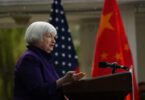The World Bank has released a report on South Asian economies, which predicts subdued economic growth of Pakistan economy over the next few years. The growth rate of national economy will be as low as 2.4 percent in the current fiscal year. Earlier, the State Bank of Pakistan in its quarterly report has stated the major factors which will make it impossible to achieve the target of 4 percent economic growth this year.
The World Bank assessment reveals that Pakistan’s economy will move modestly on the upward trajectory and economic growth rate will be 3 percent in the next fiscal year. It will take further spurt and reach to 3.9 percent in 2021-22.
The future trend of less than 4 percent economic growth has been attributed to monetary and fiscal stabalisation measures such as high interest rate, levy of new taxes and increase in the rates of existing ones and frequent hiking of electricity and gas tariffs. Currency depreciation of over 30 percent has also been included as growth depressing factor.
In contrast to the government claims of return of good days for the people in terms of rising employment opportunities, poverty reduction, boost in production and falling prices of consumers’ goods, the World Bank report does give any such happy tiding. It tells that harsh stabalisation measures will continue till FY 22. These measures have not effectively corrected the worrying macroeconomic imbalances including swelling public debt and fiscal deficit which will be over 7 percent of the gross domestic product. The only positive impact is the steep fall of 30 percent in current account deficit. But the strict policy of imports compression has also impacted the production of export products which consume imported raw materials and intermediate goods. The trade bodies have described the high regulatory duties as main reason of low exports of value added items.
The most worrying macroscopic indicator is the fast increase in public debt which has shot up to Rs.32.1 trillion, the present government alone has added Rs.5.7 trillion to it. The International Monetary Fund has projected the public debt both foreign and domestic to reach to Rs.36.6 trillion. Bulk of the new debt appears to have been spent as non-development expenditure as development spending during the past five months is Rs.164 billion. The major reason for the record low economic growth rate is the dismal performance of two major contributory sectors of economy including agriculture and manufacturing. Like the previous year agriculture will register less than one percent growth. The reasons are tremendous increase in the prices of inputs such as fertilizers, insecticides, pesticides better quality seeds, high electricity tariff for tube wells, and lack of attractive support price for wheat, rice and cotton.
The industrial sector is sluggish and production in large scale manufacturing has decreased by 8 percent. Largely hit are the automobiles and textiles. The Suzuki Motors have notified for the vendors that its production line will remain shut every Monday due to sharp decline in the sales of cars. Another reason is escalated import cost of completely knock down and semi knock down auto kits due to currency depreciation. The vendors industry which produces small auto parts has laid off 40000 workers. The employment of regular skilled workers in the auto industry is also at risk. The world Bank reports indicates that production in agriculture and industry will remain low as the interest rates will remain at the present level, causing continued credit squeeze for production and investment. Consequently, exports will not pick up and exchange rate of local currency will not improve further rather it may show falling trend. Apart from low exports, hoarding of foreign currency had also accentuated rupee depreciation. FBR has obtained a data of 24,000 people who bought large sums of US dollars during the fiscal year of 2017-18. Out of this foreign currency hoarder 9000 are from Lahore. A comprehensive policy needs formulation for making the economic environment favourable, mitigating the impact of stabalisation measures on agriculture and industry.






